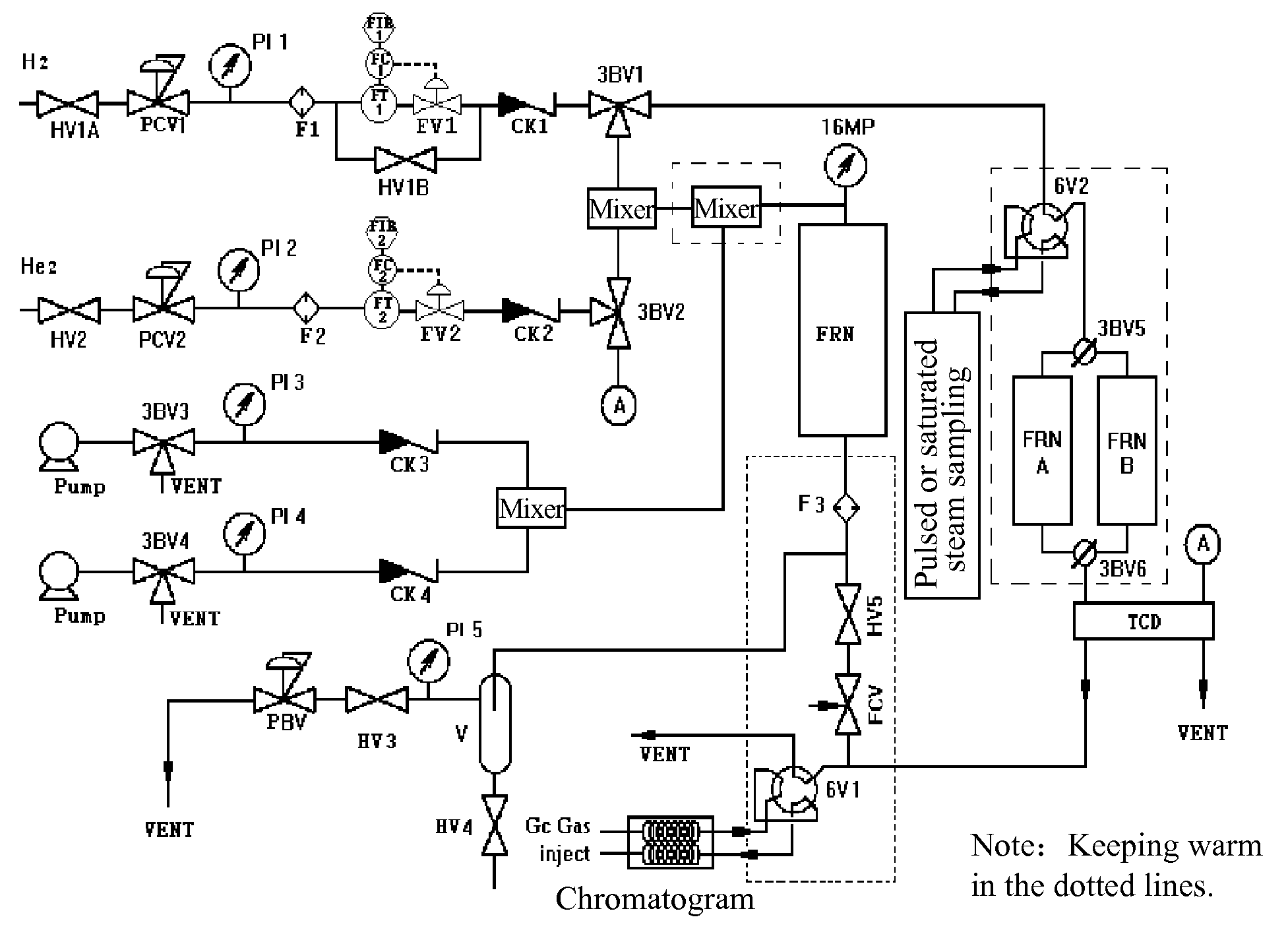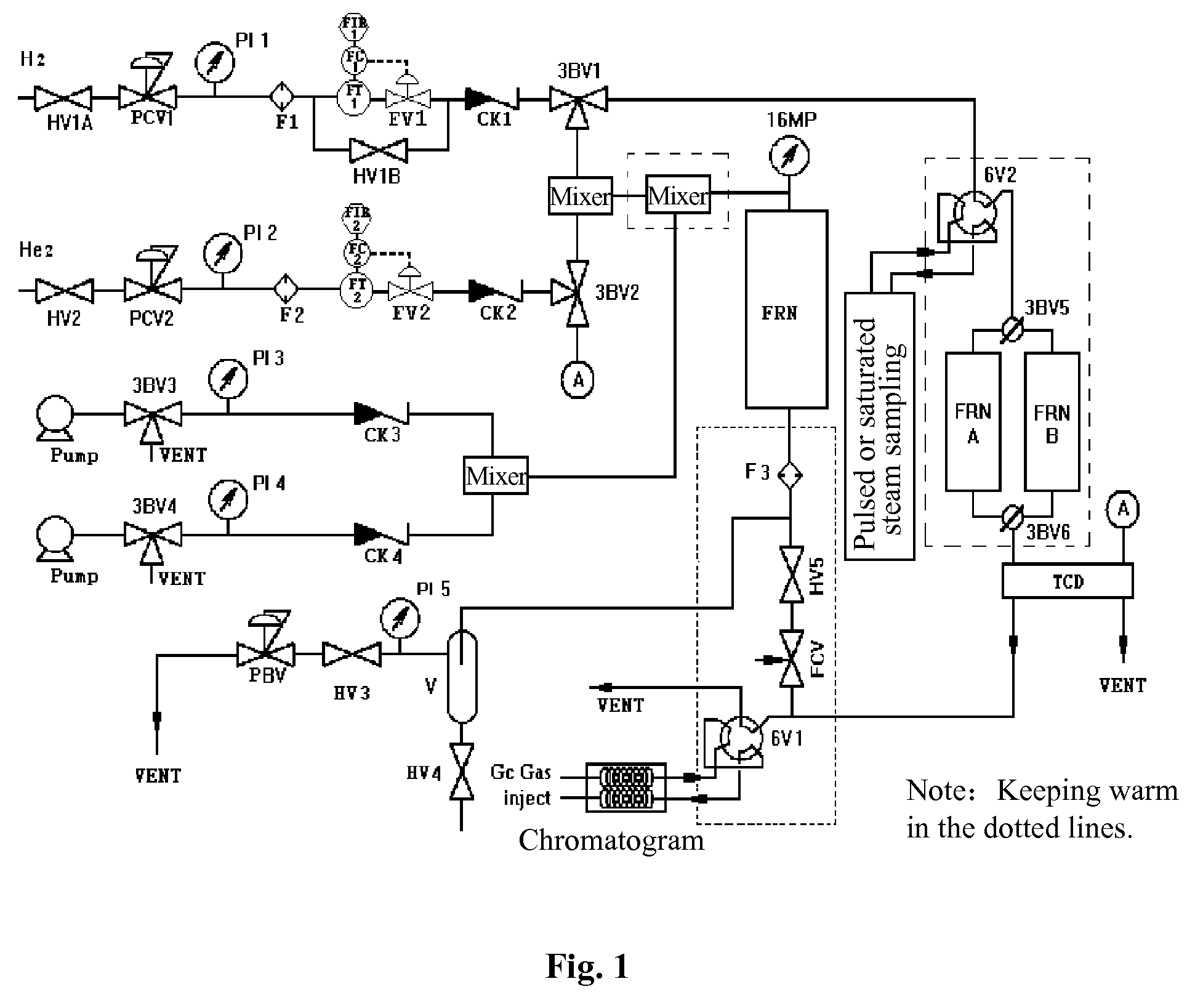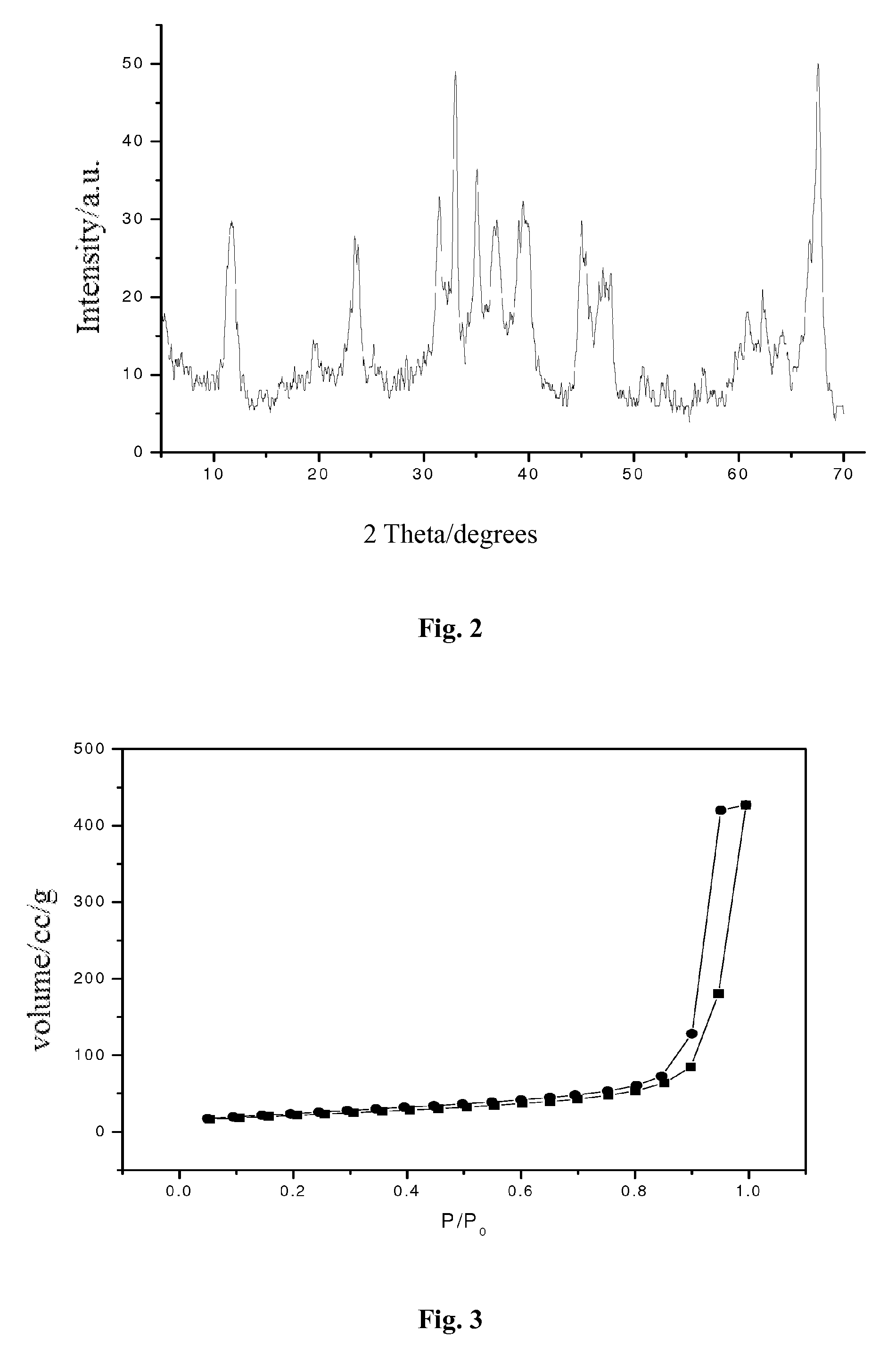Process for preparing catalyst comprising palladium supported on carrier with high dispersion
a catalyst and carrier technology, applied in the field of catalyst technology, can solve the problems of reducing the use of noble metal catalysts, achieve the effects of enhancing the total catalysis performance and catalyst stability, reducing the consumption of palladium noble metals, and high dispersion
- Summary
- Abstract
- Description
- Claims
- Application Information
AI Technical Summary
Benefits of technology
Problems solved by technology
Method used
Image
Examples
example 1
[0022]Weighting 4 g of the urea and dissolving it into deionized water to form 80 ml solution; Adding 2 g of the η-Al2O3 carrier (mesh size: 60) with spherical shape into the above solution, mixing the above solution at 130° C. for 12 hours. Weighting 12 g of the Mg(NO3)2.6H2O into deionized water to form 20 mL solution and adding it into the mixture. Stirring the obtained solution under 130° C. for 12 hours, after the process of cooling, filtration, and washed by the deionized water, the product is dried at 80° C., and the MgAl-LDHs / Al2O3 precursor can be obtained.
[0023]Weighing 0.04 g of PdCl2 to form a PdCl2 solution,; adding the MgAl-LDHs / Al2O3 precursors into the PdCl2 aqueous solution, and placing the solution into a shaker under 50° C. water bath for 24 hours; After the process of filtration, and washed by the deionized water, the solid product was dried at 80° C. Then, calcinating the product at 450° C. for 8 hours; the product was treated by a reduction process in a fixed b...
comparation example 1
[0026]As a comparation, a catalyst was prepared by the immersion method through supporting 12 g of Mg(NO3)2.6H2O and 0.04 g of PdCl2 on the Al2O3 carrier. The catalysis performance was evaluated by the same method in the example 1. The reaction conversion rate of the dimethyl terephthalate is 88%, and the selectivity of the dimethyl 1,4-cyclohexanedicarboxylate is 80%.
example 2
[0027]Weighting 8 g of the urea and dissolving it into deionized water to form 70 ml solution; Adding 3g of the θ-Al2O3 carrier (mesh size: 100) with spherical shape into the above solution, mixing the above solution at 100° C. for 15 hours. Weighting 16g of Ni(NO3)2.6H2O into deionized water to form 30 mL solution and adding it into the mixture. Stirring the obtained solution under 110° C. for 14 hours, after the process of cooling, filtration, and washed by the deionized water, the product is dried at 100° C., and the NiAl-LDHs / Al2O3 precursor can be obtained.
[0028]Weighing 0.3 g of PdCl2 to form a PdCl2 solution,; adding the NiAl-LDHs / Al2O3 precursors into the PdCl2 aqueous solution, and placing the solution into a shaker under 80° C. water bath for 12 hours; After the process of filtration, and washed by the deionized water, the solid product was dried at 120° C. Then, calcinating the product at 500° C. for 6 hours; then the product was treated by a reduction process in a fixed ...
PUM
| Property | Measurement | Unit |
|---|---|---|
| reaction temperature | aaaaa | aaaaa |
| concentration | aaaaa | aaaaa |
| dispersion | aaaaa | aaaaa |
Abstract
Description
Claims
Application Information
 Login to View More
Login to View More - R&D
- Intellectual Property
- Life Sciences
- Materials
- Tech Scout
- Unparalleled Data Quality
- Higher Quality Content
- 60% Fewer Hallucinations
Browse by: Latest US Patents, China's latest patents, Technical Efficacy Thesaurus, Application Domain, Technology Topic, Popular Technical Reports.
© 2025 PatSnap. All rights reserved.Legal|Privacy policy|Modern Slavery Act Transparency Statement|Sitemap|About US| Contact US: help@patsnap.com



